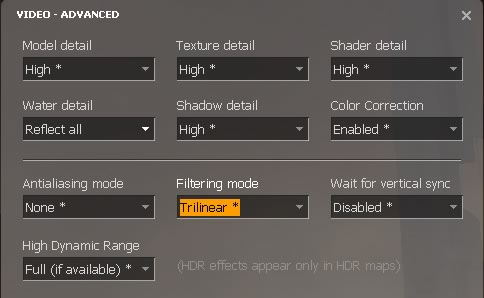Asus EN8600GTS Top
7. Half Life 2 Episode 1
Review Pages
2. Tests and Setup
3. 3D Mark 05 - 3D Mark 06
4. F.E.A.R.
5. Prey
6. Splinter Cell Chaos Theory
7. Half Life 2 Episode 1
8. Company Of Heroes (DirectX9 & 10)
9. Ghost Recon Advanced Warfighter 2 (GRAW2)
10. Lost Planet: Extreme Condition (DirectX9 & 10)
11. Call Of Juarez (DirectX 10)
12. Overclocking
13. Conclusion
- Half Life 2 Episode 1
The world of Half-Life 2 has amazed everyone with its great story, graphics and Valve's great support. Half-Life 2: Episode One is the first in a series of new adventures created by Valve that extend the Half-Life 2 single player experience. It details the aftermath of Half Life 2 and launches a journey beyond City 17.
 Stepping into the hazard suit of Dr. Gordon Freeman, you face the immediate repercussions of your actions in City 17 and the Citadel. Rejoin Alyx Vance and her robot, Dog, to once again aid the human resistance in their desperate battle against the totalitarian alien menace of the Combine.
Stepping into the hazard suit of Dr. Gordon Freeman, you face the immediate repercussions of your actions in City 17 and the Citadel. Rejoin Alyx Vance and her robot, Dog, to once again aid the human resistance in their desperate battle against the totalitarian alien menace of the Combine.
Episode One exposes Alyx's combat skills and knowledge of City 17. Battle side-by-side with her through Valve's first episodic game, a four-to-six hour adventure of greater density and detail than non-episodic releases.
We recorded a timedemo and used the built-in console to run the timedemo with each card. All tests were done at 1280x1024 with HDR shadows fully enabled. Antialiasing and Filtering modes were enabled through Nvidia's 3D control panel:


The HL2 Engine has always been a favorite area for ATI based cards. The Asus EN8600GTS Top was slower than the Powercolor X1950Pro without enabling AA/AF rendering modes.

HDR Effects and AA/AF do affect performance. The PowerColor X1950 Pro remains faster than the Asus EN8600GTS Top.
Review Pages
2. Tests and Setup
3. 3D Mark 05 - 3D Mark 06
4. F.E.A.R.
5. Prey
6. Splinter Cell Chaos Theory
7. Half Life 2 Episode 1
8. Company Of Heroes (DirectX9 & 10)
9. Ghost Recon Advanced Warfighter 2 (GRAW2)
10. Lost Planet: Extreme Condition (DirectX9 & 10)
11. Call Of Juarez (DirectX 10)
12. Overclocking
13. Conclusion





















